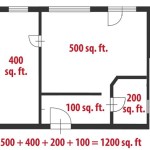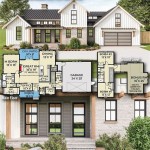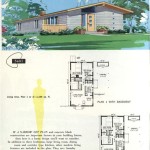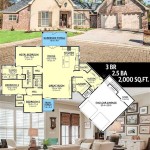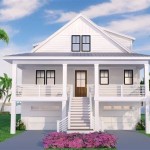How to Design a Bungalow House Plan
Bungalows, with their distinctive low-pitched roofs and charming simplicity, continue to capture the hearts of homeowners. Their versatility and adaptability make them suitable for various lifestyles and family sizes. Designing a bungalow house plan requires careful consideration of space utilization, aesthetic preferences, and practical needs. This article will guide you through the essential steps involved in creating a functional and visually appealing bungalow home.
Defining Your Vision and Needs
Before embarking on the design process, it is crucial to establish a clear vision for your bungalow. Consider your intended use of the space, the number of occupants, and any specific features you desire. For instance, if you have a large family, you may need more bedrooms and bathrooms. If you enjoy entertaining, a spacious living area or a dedicated dining room would be essential. Furthermore, consider the size and layout of the lot where the house will be built. This will play a significant role in determining the overall footprint and orientation of the bungalow.
An initial step is to create a needs assessment. This can include various factors such as: *
Number of bedrooms and bathrooms:
Determine the required number of sleeping spaces and bathroom facilities, factoring in any future growth or guest accommodations. *Living space requirements:
Consider the desired size and layout of the living room, dining area, and kitchen. *Special needs:
If there are any specific needs, such as accessibility features or a home office, make sure to incorporate them into your plan. *Outdoor living:
Define your needs for outdoor space, including patio or deck areas, and consider how they will integrate with the overall house plan. *Style preferences:
Decide on the desired architectural style and aesthetic elements, such as the exterior materials, roofline, and window treatments.Creating a Functional Floor Plan
Once you have defined your needs, it is time to develop a functional floor plan. The key is to create a layout that maximizes space utilization and provides a comfortable flow between different areas. Here are some guidelines to follow:
Prioritize Open-Concept Living
Bungalows are renowned for their open and airy feel. Consider incorporating an open-concept design that connects the living room, dining area, and kitchen. This creates a sense of spaciousness and promotes interaction between family members.
Strategic Placement of Bedrooms
The placement of bedrooms is crucial for privacy and comfort. If the bungalow will house children, consider grouping the bedrooms together for easier supervision. For families with older children, providing each child with a separate room promotes independence. Depending on space constraints, consider incorporating a master suite with a private bathroom and dressing area.
Include Functional Storage Solutions
Bungalows, while charming, can sometimes be limited in terms of storage space. To avoid clutter, incorporate built-in storage solutions such as closets, cabinets, and shelves. Consider incorporating a mudroom or pantry to organize entryway clutter and household supplies.
Maximize Natural Lighting
Bungalows excel at maximizing natural light. Include ample windows and skylights to illuminate the interior. Carefully consider the orientation of the house to ensure that the living spaces receive optimal sunlight throughout the day.
Incorporating Exterior Design Elements
The exterior of a bungalow plays a crucial role in its overall appeal.
Consider Architectural Styles
There are various architectural styles that lend themselves well to bungalow designs. Some popular options include: *
Craftsman:
characterized by its natural materials, exposed beams, and handcrafted details *Prairie:
emphasizes horizontal lines, low-pitched roofs, and a connection to nature *Mediterranean:
incorporates stucco walls, terracotta tile roofs, and arched doorwaysEmbracing the Simplicity of the Design
Bungalows are known for their simplicity. Avoid overly complex or ornate details, focusing on clean lines, symmetrical forms, and natural materials. Consider using stone, brick, or wood for the exterior cladding. Choose earth-toned colors that blend seamlessly with the surroundings.
Landscaping and Hardscaping
The landscaping and hardscaping around the bungalow complement its overall design. Consider incorporating elements such as a front porch with a welcoming seating area, a well-maintained lawn, and thoughtfully placed trees and shrubs.

Free Lay Out And Estimate E Bungalow House Floor Plans Simple Designs

Your Guide To Bungalows What Is A Bungalow House And More Houseplans Blog Com

Modern Bungalow House Design With Three Bedrooms Ulric Home Bedroom Plan

Your Guide To Bungalows What Is A Bungalow House And More Houseplans Blog Com

Small Bungalow House Plans We Love Blog Dreamhomesource Com

Small Bungalow House Plans

Three Simple But Charming Bungalow Designs With Bedrooms Ulric Home Beautiful House Plans Model Plan Small Blueprints

Modern Bungalow House Design 4999 Easemyhouse

Bungalow House Plans We Love Blog Homeplans Com

Bungalow Floor Plans Style Homes Arts And Crafts Bungalows House Design
Related Posts


